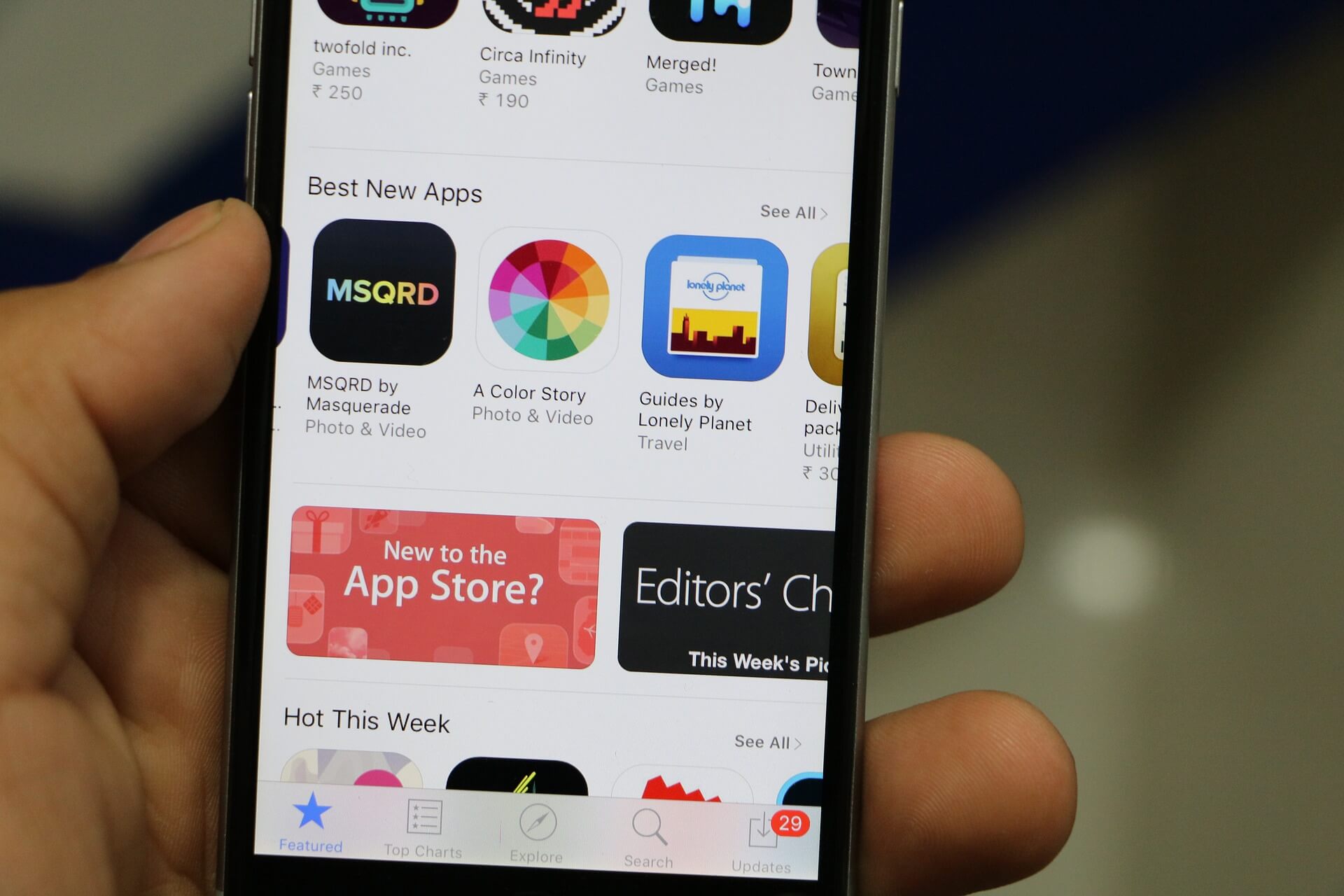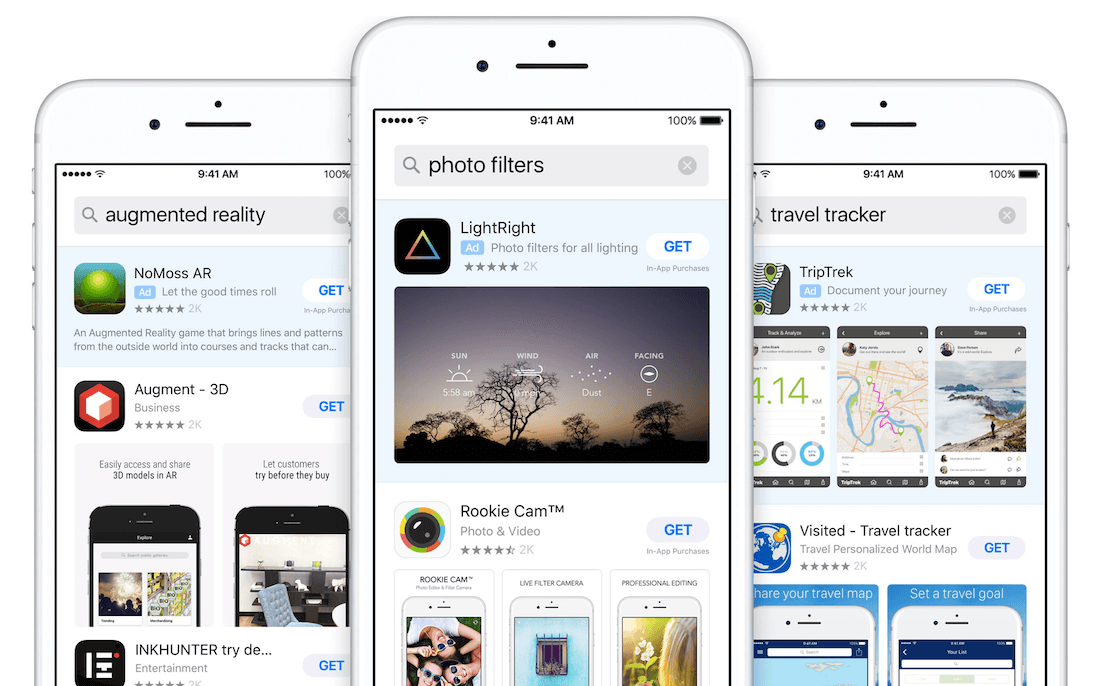
Posted on January 20th, 2018
Apps thrive off their users. Understanding the current user experience is a top priority. As a developer, you want to make sure that users are enjoying your app and saying positive things to help with the app’s overall rating. The easiest way to understand their experience is by monitoring user reviews. Monitoring and managing user reviews can help you understand their current experience and help boost retention and conversion rates. Since everyone wants to boost their numbers, it’s important to monitor and respond to these reviews to engage with a majority of the app’s audience. Establishing a constructive developer-user relationship that shows you want to give them the best possible experience. By adopting one of ASO’s many facets, Reputation Management, developers turn negative reviews in positive ones.

Posted on January 16th, 2018
Imagine you’re a user browsing through either the App Store or Google Play Store and an app catches your attention. While some users instantly tap ‘Get’ without reading the description or even looking at the screenshots, you want to dive deeper into this app and understand what other users are saying about it. You start reading reviews only to realize that the app’s star rating is low and many users are upset because of various bugs or crashes. Thanks to these user reviews, you move onto the next best app you can find. Bad reviews tend to have a negative effect on the decision-making process of users. If they see an app that is riddled with negative reviews, they are less likely to convert. User reviews can be a major deciding factor, so what can developers do to make sure their reviews don’t negatively affect their conversion rate? Developers can focus on monitoring and responding to user reviews, which is an important facet of ASO best practices. Before we get into responding to users, let’s first break down why reviews are important.

Posted on January 12th, 2018
When it comes to getting an app seen and downloaded, reaching the top 10 list in the app stores is like reaching the holy grail. For most people, it takes a momentous adventure through proverbial caves, dodging competitors, and working hard (on their ASO strategy) to reach their goals. However, for some, reaching the top 10 happens without much effort. Reaching the top 10 is a numbers game that takes into account the amount of downloads over a certain period of time. It can be a great way to jumpstart an app’s claim to fame, but without proper ASO, an app will start to lose steam and drop from the ranks faster than a boulder falling from the sky. Before we jump into why ASO is so important even if an app is already ranking in the top 10, let’s go over what it actually takes to reach. The top 10 list requirements vary for different app stores, and even for different categories within an app store, but the concept is the same. If an app is able to get more downloads over a set period of time than another app, it ranks higher. To reach the top spot in a category, or overall, the app must have more downloads over the same time period as the app in the second spot.

Posted on January 6th, 2018
Every developer anticipates that fleeting moment when the “App Store: Promotional artwork request for…” email arrives in their inbox. But it’s not luck that brought that email. Every app that is chosen to be featured in the App Store is there because they practice good App Store Optimization strategies. Once an app is featured, Apple needs a set of creative assets to use. Every developer can submit these in the Promotional Artwork tab within iTunes Connect. When submitting your Promotional Artwork, it is mandatory to use the pre-set templates because it is the only format supported on iTunes Connect. This is so Apple does not have to request every type of asset from a given developer every time they need it. Instead, the developer’s kit of assets will be readily available to Apple at any time. There is more than one Dropwell in the Promotional Artwork Tab for different types of creative assets that Apple might need for a featured app. When submitting artwork for each Dropwell, it is imperative to respect Apple’s promotional artwork guidelines as well. For instance, artwork cannot include any URLs, marketing taglines, app icons, references to price, or featured Apple products. However, the different types of Dropwells have different specifications. Title Treatments

Posted on January 3rd, 2018
It’s that time of the year again! The holiday season has come to a close and the New Year brings new opportunities for developers and their apps. With the turn of the holidays comes a throng of new smartphone users who are eager to fill their phone with new apps. With the start of the year, developers are now given the opportunity to get their app noticed on the App Store or Google Play Store. This past holiday season can confirm that apps are here to stay. In fact, 2017 was another record-breaking year for the industry, reaching a projected 197 billion downloads across all app stores. However, for those who haven’t kept up to date with the newest trends or ASO best practices, do not fret. We’ve outlined everything developers need to know to kick start their ASO strategy in 2018! Major Changes From 2017 Before jumping into how to get your ASO strategy started for 2018, below are some major changes that 2017 brought to the app industry.

Posted on December 9th, 2017
App developers couldn’t ask for a better window of opportunity this holiday season to address their app’s core features and encourage users to tap “Get.” With new updates in the app stores and the release of long-awaited phones like the iPhone X, Google Pixel 2, and Samsung Galaxy Note 8, comes the perfect intersection for success. It’s more than likely that a good number of lucky recipients will be gifted a new phone before the year draws to an end – a phone that will be waiting to be filled with new apps. If you’re an app developer, you may be asking yourself, “How can I take advantage of this situation?” Regardless of whether your app is deployed on the App Store or Google Play Store, you have the option to choose the orientation (portrait or landscape) of your preview video and screenshots. A major question to consider is which option is right for your app? In this case, ASO doesn't have

Posted on December 2nd, 2017
In ASO, search visibility is important, but you need to focus on converting a viewer into a user. Your app can be ranked in the Top 10 for all high-volume keywords, but if you’re converting only a small percentage of users, you’re missing a huge mark. It’s a well-known fact that the best way to convert users is by having engaging creatives (icon, screenshots, preview video). Sometimes, however, the icon, screenshots and preview video don’t engage the audience well, resulting in decreased conversion rates. In order to successfully convert users, you have to test your creatives to see what resonates best with your audience. You can turn to A/B testing, the process of selecting an app variable and testing two variants to see which one performs better and converts the highest number of users. Testing your app’s creatives is an excellent way for developers to measure the impact of different variables to provide a more effective experience to users browsing the app store. Color palette, screenshot orientation, the order you position your screenshots, icon design and including a preview video are all variables that can be tested. Receiving quality feedback on which creative variant performed better than another will provide helpful insights that can save you time and money.

Posted on November 29th, 2017
As the holidays approach, many developers are launching updates to take advantage of the shift in seasonal search trends. Properly researching, preparing and launching updates tied to these trends can help apps stay competitive with what’s trending, while maintaining the app’s core rankings. End-of-the-year holidays provide a unique opportunity for apps across a wide range of categories. It’s always important to analyze how an app is performing and adjust accordingly. With the holiday season, however, comes specific opportunities for apps like shopping apps, games and even local restaurant discovery guides. These types of apps can benefit from eager users searching the app stores during the holidays, but can only successfully convert these users by incorporating ASO.

Posted on November 25th, 2017
It has been just over one year since Apple has rolled out its Search Ads platform, something that piqued the interested of developers interested in quality install channels world-wide. Search Ads is Apple's tool that helps developers bid on certain keywords at varying costs, allowing them to compete against other competitors in their market for their relative “hot keywords.” To this date, developers, agencies and marketers have spent upwards of $580 billion, according to a recent report by eMarketers. From a marketing perspective, it would only make sense to start spending it where millions of mobile users are browsing for the next big app. If you've got your campaigns all set up, how are they looking? Are you seeing the ROI you were hoping to see straight off the bat with your new investment in Search Ads? Hopefully your answer isn’t "no." If it is, then you may want to consider these five reasons why your Search Ads campaign may be failing: 1. Your Metadata is Irrelevant Make sure you fine tune your app’s metadata (title, subtitle, keywords, description) to make your app relevant for your most important terms in Search Ads. One of Apple’s first announcements was that your app would need to be as relevant as possible for all of the keywords you bid on. One of the largest pillars of App Store Optimization, relevancy can be built the following ways: a) Including the Search Ads keywords in your app's title b) Including the Search Ads keywords in your app's subtitle c) Including the Search Ads keywords in your app's promotional text d) Including the Search Ads keywords in your app's description Your ability to incorporate these keywords into your app description helps Apple determine how relevant you are for these keywords. This is not to say that you should keyword stuff- building contextual relevance for your targeted terms will help. The more relevant you are, the more likely you’ll appear and the more likely you’ll convert.

Posted on November 23rd, 2017
The holidays are just around the corner and app developers all around the world are updating their app’s metadata to let users know they are ready for the holidays. One thing developers have to consider when preparing their app’s metadata is how different territories celebrate the holidays. App developers that have their app deployed in multiple territories already know the importance of localization. What they might not know is how users in different territories take part in the holiday season. Some territories celebrate their version of Thanksgiving at different times, while some don’t celebrate it at all. As we move into December, many developers are looking to target Christmas, a holiday that some territories don’t celebrate or celebrate differently. Developers need to pay attention to the differences among territories. For instance, Japan celebrates Christmas Eve more than Christmas Day, and part of India celebrates Christmas by decorating banana and mango trees. It’s differences like these that developers need to pay attention to when localizing their apps for the holidays. If any developer is worried or unsure about where to start in the localization process, they can follow our tips to aid them this holiday season.

Posted on November 16th, 2017
With the release of iOS 11, developers everywhere are double checking their ASO checklists, especially in regard to their app

Posted on November 11th, 2017
As we near the holiday season, it means that we also get closer and closer to Black Friday and Cyber Monday.













